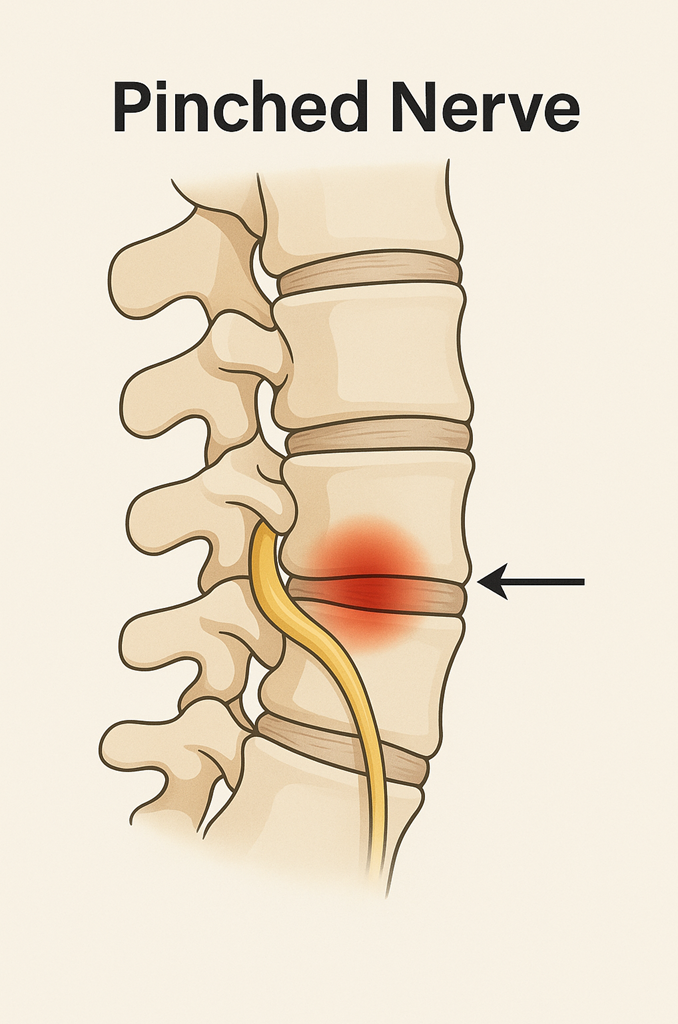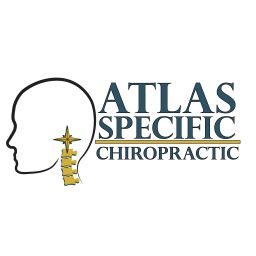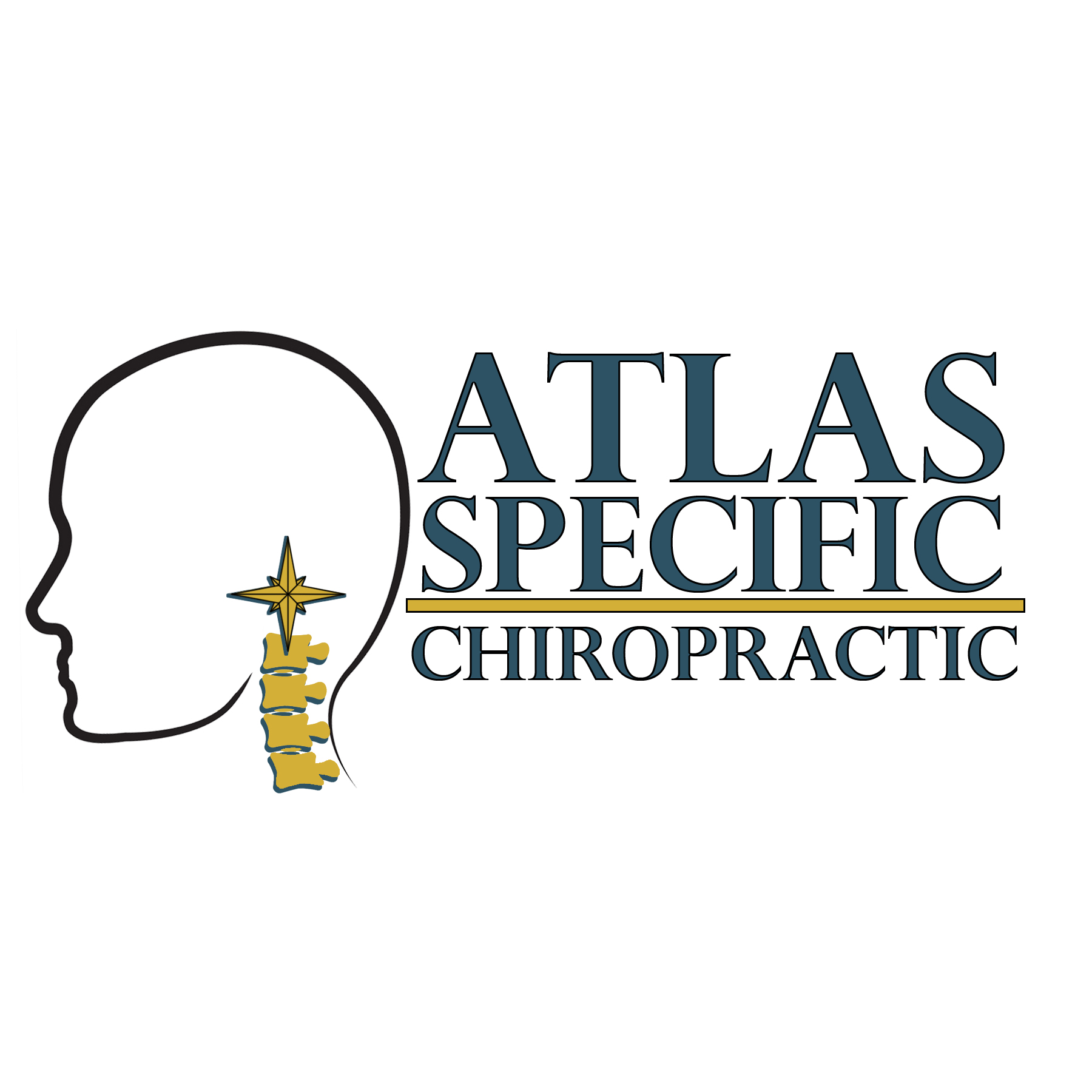
Pinched Nerve
Gentle, Precise Relief for a Nerve Pain Through Upper Cervical Chiropractic Care
Understanding a Pinched Nerve
A pinched nerve happens when a nerve becomes irritated, compressed, or inflamed.
This can occur anywhere in the spine — the neck, mid-back, or lower back — and can create pain that radiates into the arms, hands, legs, or feet.
People often describe a pinched nerve as:
-Sharp, shooting, or burning pain
-Tingling or “pins and needles”
-Numbness in a specific area
-Muscle weakness
-Pain that worsens with certain movements
-A feeling of tightness or stiffness
-Radiating pain into the arms or legs
The symptoms can be mild or severe, and they often appear suddenly after a simple movement — turning your head, lifting an object, or sitting too long.
But the real cause usually develops over time, often due to misalignment, poor posture, or nerve irritation higher in the spine.
What Causes a Pinched Nerve?
Common contributors include:
-Herniated or bulging discs
-Arthritis or degeneration
-Muscle spasms
-Poor posture or forward-head posture
-Repetitive strain
-Heavy lifting
-Stress or tension
-Old injuries or whiplash
-Loss of spinal curve
-Narrowing of the spinal canal (stenosis)
However — many pinched nerves occur not simply because of a sudden injury, but because the spine has been compensating for an upper cervical misalignment for months or years.
The Upper Cervical Connection to Pinched Nerves
Although pinched nerves are often felt in the neck, shoulders, arms, lower back, or legs, the underlying cause frequently begins at the top of the spine — the atlas (C1) and axis (C2).
Here’s how:
1. Upper cervical misalignment shifts posture
When C1 or C2 are misaligned, the entire spine compensates:
-Head tilts or shifts
-Shoulders rotate
-Mid-back becomes tight
-Hips become uneven
-Extra strain hits discs and nerves
This increases pressure on nerves further down the spine.
2. Brainstem and nerve communication become irritated
The brainstem regulates:
-Muscle tone
-Pain perception
-Posture
-Inflammation
-Nerve sensitivity
If the upper cervical spine is misaligned, the nervous system becomes more reactive and the tissues around nerves become more inflamed — making them more prone to irritation.
3. Muscles tighten to protect the misalignment
Chronic upper cervical imbalance forces surrounding muscles to compensate:
-Neck muscles become tight
-Shoulder muscles lift or rotate
-Lower back muscles overwork
-Hip stabilizers become strained
These imbalances can directly pinch or compress nerves.
4. Disc pressure increases
Poor posture increases compression on the discs, especially in the neck and lumbar spine, making nerves more vulnerable to irritation.
Correcting the upper cervical spine reduces these compensations and removes stress from irritated nerves throughout the spine.
Why Traditional Treatment Often Falls Short
Most pinched nerve treatments focus only on the painful area:
-Pain medications
-Muscle relaxers
-Steroid injections
-Physical therapy
-Stretching
-Ice/heat
-Massage
These may offer temporary relief but don’t correct the underlying structural imbalance.
If the upper cervical spine remains misaligned:
-Pain often returns
-Nerve irritation continues
-Posture worsens
-Muscles stay tight
-Discs remain under pressure
Long-term relief requires correcting the root cause, not just the symptoms.
How Upper Cervical Chiropractic Helps
At Atlas Specific Chiropractic, we specialize in identifying and correcting the exact misalignment of the atlas and axis — the foundation of the spine.
✔ Functional Neurological Scans (Tytron)
Detect patterns of nerve irritation and inflammation.
✔ Precision Upper Cervical X-rays
We measure your misalignment down to 1/100th of a degree and millimeter.
✔ Gentle AHKC (Advanced HIO Knee-Chest) Technique
No twisting.
No cracking.
No forceful manipulation.
Just precise correction that restores proper alignment and reduces nerve pressure.
What Patients Notice After Upper Cervical Care
As alignment improves, many patients experience:
-Reduced nerve pain
-Decreased tingling or numbness
-Better movement with less stiffness
-Improved posture
-Reduced muscle tension
-Stronger balance and coordination
-Relief that lasts — not just temporary easing of symptoms
When the spine is aligned from the top, the entire nervous system functions more clearly.
Are You Experiencing a Pinched Nerve?
You may be a strong candidate for upper cervical evaluation if you have:
-Radiating pain into the arms or legs
-Numbness or tingling in hands or feet
-Neck pain with arm symptoms
-Lower back pain with leg symptoms
-Pain that worsens with sitting or computer use
-Sciatica-type symptoms
-Shoulder blade or mid-back pain
-Symptoms that change with posture
-A history of whiplash, concussion, or neck injury
These patterns strongly suggest an upper cervical component.
A Gentle Approach That Supports Long-Term Relief
A pinched nerve can interfere with work, sleep, movement, and quality of life — but lasting relief is possible when the root cause is addressed.
At Atlas Specific Chiropractic in Hiawatha, IA, we focus on restoring proper alignment, reducing nerve irritation, and allowing your body to heal naturally.
📞 Call (319) 343-8540 or schedule your first visit today.
Open Hours
Monday, Tuesday, Thursday
9:00 - 6:00
Wednesday
12:00 - 6:00
friday
9.00 - 2.00
© Atlas Specific Chiropractic | Powered by Webflow.




